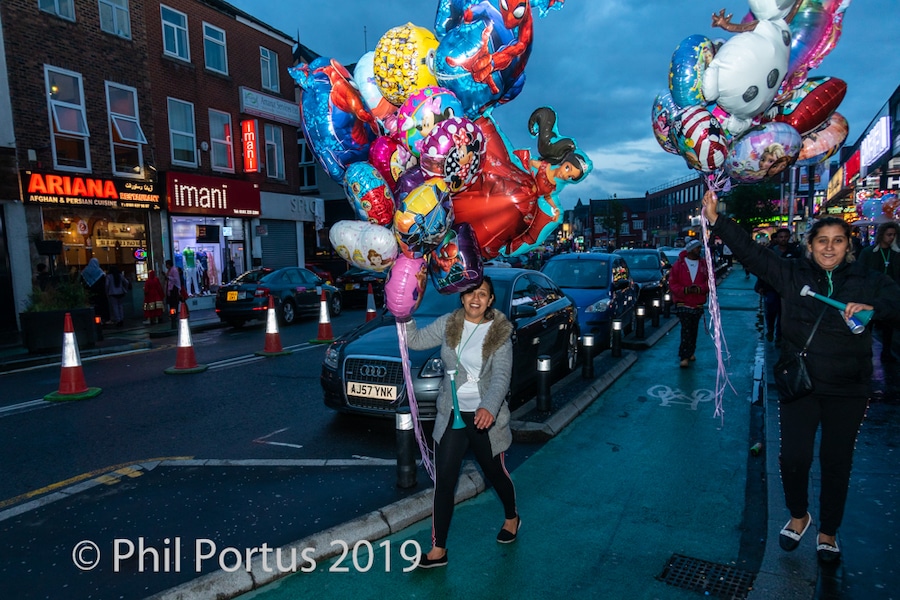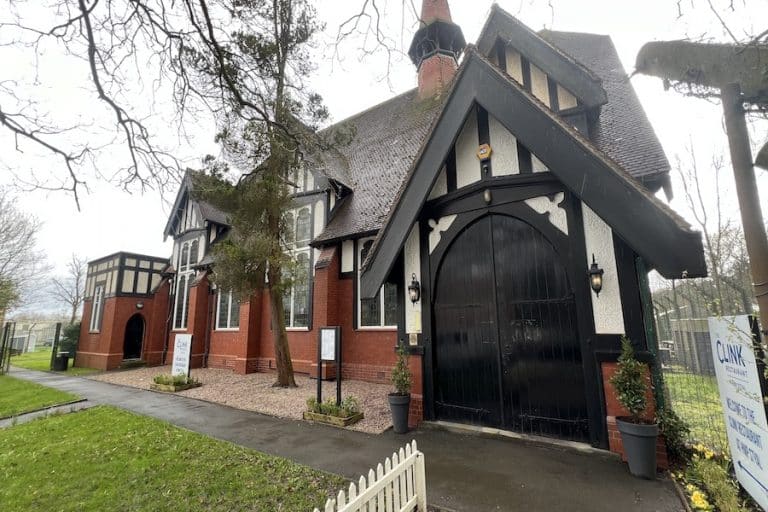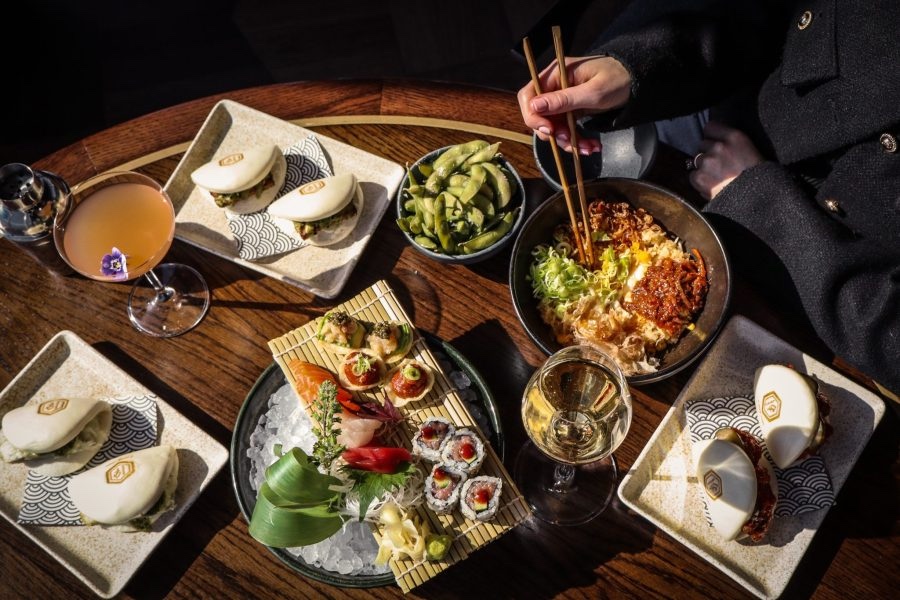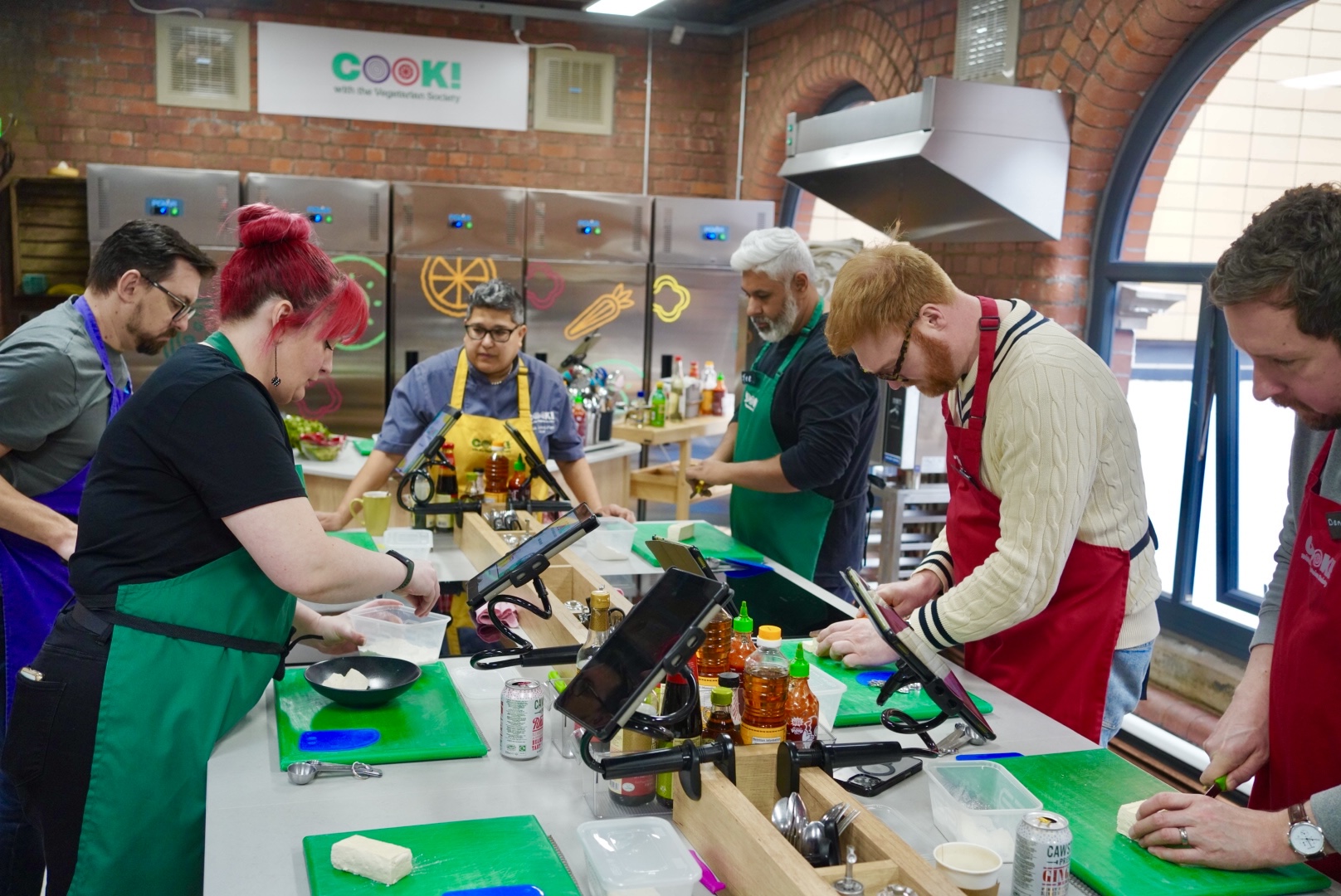How Manchester’s multinational neighbourhood Curry Mile has changed over the last decade
- Written by Thom Bamford
- Last updated 1 year ago
- Community, Cornerstone, History, People

At the heart of Manchester’s culinary weave, lies the legendary Curry Mile.
Food, in many instances, is a great way to bridge cultural divides.
The bustling Wilmslow Road, stretching over a mile in the Rusholme district, is an epicentre of tantalising flavours, aromatic spices, and a melting pot of cultures.
We’re looking at the historical journey of the place, unravelling the captivating story behind Curry Mile and how it’s changed over the last decade, and how it still keeps the crown as the best place to go for dinner in the city.

Labour Councillor for the area, Rabnawaz Akbar said: “There are around 90 different dialects and languages spoken here. It is multiculturalism at its best.”
We couldn’t agree more.
A Dash of Spice in Rusholme
The origins of Curry Mile can be traced back to the 1950s, when the first wave of South Asian immigrants arrived in Manchester, primarily from countries such as India, Pakistan, and Bangladesh.
Settling in the Rusholme area, they brought with them a treasure trove of culinary traditions and flavours.
With time, small Indian and Pakistani restaurants began to emerge, serving traditional dishes to a growing community of locals and students from nearby universities
The Culinary Melting Pot

As the South Asian community flourished, so did the number of restaurants along Wilmslow Road.
In the 1970s and 1980s, Rusholme continued to evolve as restaurants expanded and diversified their offerings to cater to the increasingly multicultural audience.
Diners flocked to Curry Mile to savour the rich flavours of aromatic curries, succulent kebabs, and delectable biryanis.
Devang, owner of Ziya

We spoke to Devang Gohil, owner of Ziya Restaurant on the Curry Mile, who told us of the changes he has seen since he took it over nine years ago.
He said: “I’ve been here for nine years. But I’ve been visiting the Curry Mile for about 20 years, and I’ve seen a lot of changes.
“Always after going out clubbing, we’d come back to Curry Mile for a great bite to eat.
“It’s a great meeting spot for friends. I think back in the day, there weren’t that many Indian restaurants outside of the curry mile, so people who loved this style of food would be drawn to the area.
“There are so many Indian restaurants in town now and everywhere else, perhaps the draw has been slightly diminished.
“We used to have lots of huge restaurants in the area, where people would come for a big night out with their families; now there are lots of Shisha and takeaways.
“There’s a huge variety of food from around the world now, not located solely from India and South Asia, Shawrmas and falafels and things like that.

“It’s gone way more diverse than just curry curry. It’s good to see! It doesn’t matter where it’s from, we just want as many good restaurants as possible to open up in the area to increase the footfall.
“Despite the changes and diversification, it’s still an amazing place to come and eat.
“I think the demographics have changed a bit, knowing Curry Mile back in the day families used to come for dinner, people from everywhere used to be drawn to the food.
“Now, you’ve got so many other good places across the city where people can go and eat, perhaps the draw has been slightly diminished. That’s not to say there are still not loads of amazing restaurants here, because there are.
“Reputation of the Curry Mile will remain undiminished, it’s still an amazing place.
“I think people should come and try it again, but at the moment we’ve got lots of students and locals and tourists too, who want to see what it’s all about.”
Spreading Fame

The reputation of Curry Mile soon spread beyond Rusholme’s borders, attracting visitors from across Manchester and beyond.
In the 1990s, Curry Mile became a symbol of Manchester’s multiculturalism and an iconic destination for food lovers.

The restaurants competed fiercely, not only in flavour but also in their vibrant, welcoming atmospheres.
Each establishment showcased its unique culinary identity, whether it was traditional Pakistani cuisine, aromatic Bangladeshi dishes, or the spicy tang of Indian delicacies.

We spoke to Photographer Phil Portus who has been documenting the Curry Mile since 2016.
He spoke of the changes of demographics, restaurants and cultures as the Curry Mile has widened its offerings from all corners of the world.
We asked him what changes he had seen over the years as the community continues to grow and expand.

Phil said: “We have been photographing since 2016 so the changes have been continual throughout this period.
“The most striking is the number of shops that have come and gone within a short time span.
“The pandemic has certainly led to a few casualties in terms of retail and some hospitality venues, but the units never stay vacant for long.
“The most telling sign in terms of diversity is in the mix of eating establishments and their ethnic origins.”

Michael Baker, who is working together with Phil on their photo exhibition The Curry Mile Project, talked about some of the transformations he has seen over the years he’s been documenting the area.
Michael said: “The transformation has definitely been one of multiculturalism influenced by immigration from the Middle East and East Africa.
“Unfortunately, this has been predominantly driven by conflict in that part of the world.
“The result however is a hugely mixed neighbourhood of previously unrepresented cultures, through venues such as dessert parlours, barber shops and shisha bars.

“It’s all about the people and where they originate from.”
“We have a selection of individual and family portraits taken in various locations and they help underline the ethnic evolution of Rusholme.
“For example, Kurdish barbers, Syrian dessert parlours and Iranian restaurants all co-exist to serve their communities but sit alongside each other harmoniously.”
Beyond Curries

While Curry Mile may have gained its fame from its namesake dish, the dining options extend far beyond curry houses.
Today, the vibrant stretch boasts a wide array of eateries representing diverse cuisines, from Middle Eastern and Turkish delights to Afro-Caribbean flavours and mouthwatering Chinese fare.
Michael Baker added that one of the biggest additions he’s seen in the area is the proliferation of Shisha bars.
Michael said: “One of the biggest additions to Curry Mile is the evolution of the shisha bar.
“This is a direct reflection of the influence of the Arabic culture along Wilmslow Road and also the demise of the pubs, several (Huntsman & The Clarence) are now shisha establishments.
“We have captured this shisha culture objectively through photography.
“There is certainly divided opinion regarding their place in the community – we are there to observe and not judge”

This eclectic mix reflects the evolving tastes and multicultural nature of Manchester’s diverse population.
Community and Culture
Curry Mile is not merely a culinary destination; it is a thriving hub of community and cultural exchange.
The annual Rusholme Festival celebrates the area’s multiculturalism, attracting both locals and tourists alike.
The event showcases live performances, music, dance, and of course, the tantalising array of food stalls representing the diverse flavours of the district.

And Phil Portus said that this diversity is what draws people into such a vibrant place.
He said: “The individuals ultimately make up the collective community.
“There are definitely destination venues for particular ethnic groups, however, what we have found is a harmonious co-existence of hugely diverse cultures.
Looking Ahead
As Manchester continues to evolve and grow, Curry Mile remains a testament to the city’s rich cultural fabric.
The district’s establishments have adapted to the changing times, offering contemporary interpretations of traditional dishes while staying true to their culinary roots.
Long live the Curry Mile!
The Curry Mile Project Exhibition takes place at Central Reference Library, Manchester City Centre Upper Gallery: July 10th – September 30th 2023
- This article was last updated 1 year ago.
- It was first published on 12 July 2023 and is subject to be updated from time to time. Please refresh or return to see the latest version.
Did we miss something? Let us know: press@ilovemanchester.com
Want to be the first to receive all the latest news stories, what’s on and events from the heart of Manchester? Sign up here.
Manchester is a successful city, but many people suffer. I Love Manchester helps raise awareness and funds to help improve the lives and prospects of people across Greater Manchester – and we can’t do it without your help. So please support us with what you can so we can continue to spread the love. Thank you in advance!
An email you’ll love. Subscribe to our newsletter to get the latest news stories delivered direct to your inbox.
Got a story worth sharing?
What’s the story? We are all ears when it comes to positive news and inspiring stories. You can send story ideas to press@ilovemanchester.com
While we can’t guarantee to publish everything, we will always consider any enquiry or idea that promotes:
- Independent new openings
- Human interest
- Not-for-profit organisations
- Community Interest Companies (CiCs) and projects
- Charities and charitable initiatives
- Affordability and offers saving people over 20%
For anything else, don’t hesitate to get in touch with us about advertorials (from £350+VAT) and advertising opportunities: advertise@ilovemanchester.com

Head down the rabbit hole for Adventures in Wonderland with Z-arts

Major rail investment set to transform Manchester-Leeds commutes

“His presence will be deeply missed” Children’s hospice bids farewell to their visionary CEO

Has Gordon Ramsay created Manchester’s ultimate bottomless brunch?

The Clink celebrates ten years of empowerment and second chances

















